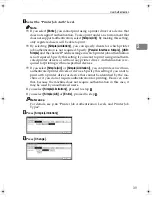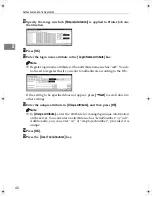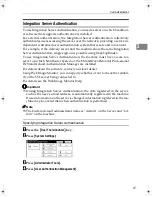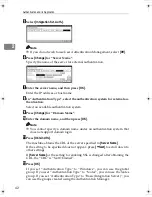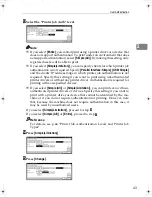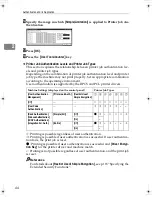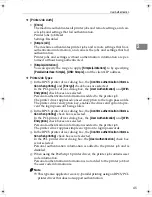
Authentication and its Application
30
2
D
Press
[
Address Book Management
]
.
If the setting to be specified does not appear, press
[
T
Next
]
to scroll down to
other settings.
E
Select the user or group.
F
Press
[
Auth. Info
]
.
G
Specify the login user name and password.
H
In “Available Functions”, select the functions available to the user.
I
Select
[
Use Auth. Info at Login
]
in “SMTP Authentication”.
If the setting to be specified does not appear, press
[
T
Next
]
to scroll down to
other settings.
Limitation
❒
When using
[
Use Auth. Info at Login
]
for “SMTP Authentication”, “Folder Au-
thentication”, or “LDAP Authentication”, a user name other than “other” ,
“admin” , “supervisor” or “HIDE***” must be specified. The symbol “***”
represents any character.
❒
To use
[
Use Auth. Info at Login
]
for SMTP authentication, a login password
up to 64 characters in length must be specified.
Note
❒
For folder authentication, select
[
Use Auth. Info at Login
]
in “Folder Authen-
tication”.
❒
For LDAP authentication, select
[
Use Auth. Info at Login
]
in “LDAP Authen-
tication”.
J
Press
[
OK
]
.
K
Press
[
Exit
]
.
L
Press the
{
User Tools/Counter
}
key.
D0086951_RussianC45-EN.book Page 30 Wednesday, May 31, 2006 11:45 AM
Summary of Contents for DSm725e
Page 8: ...2...
























